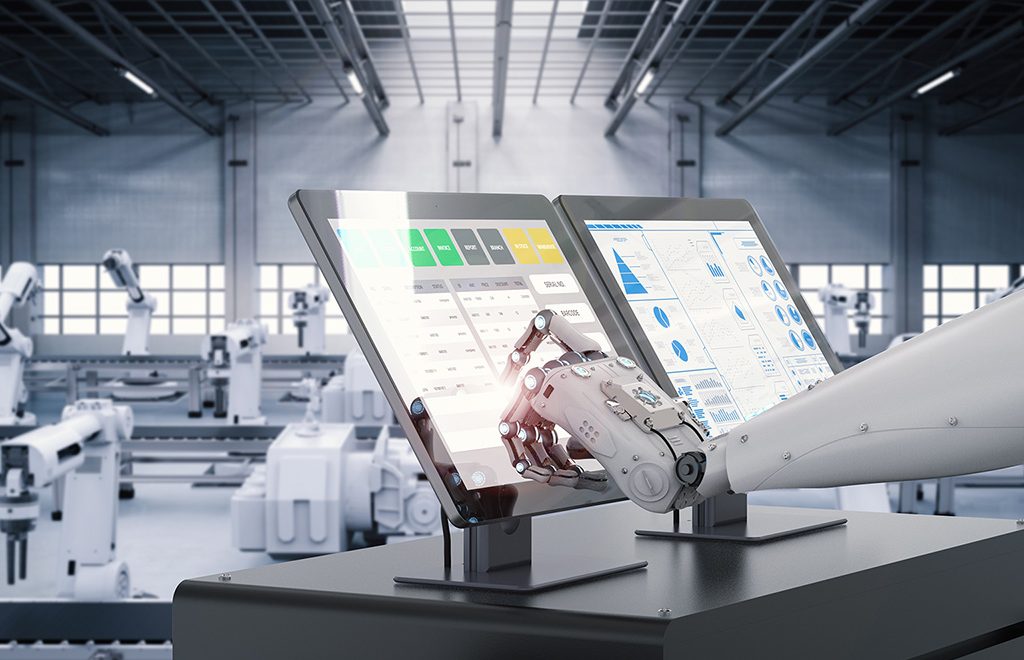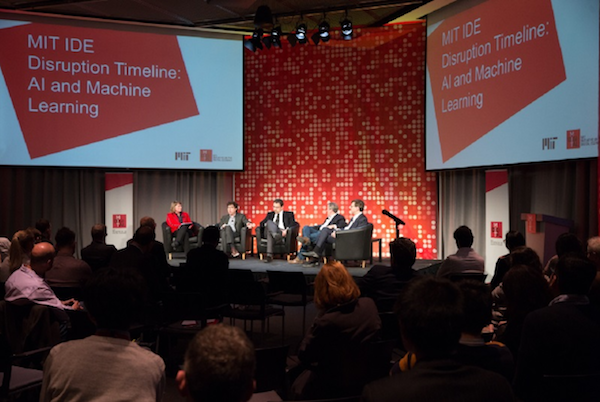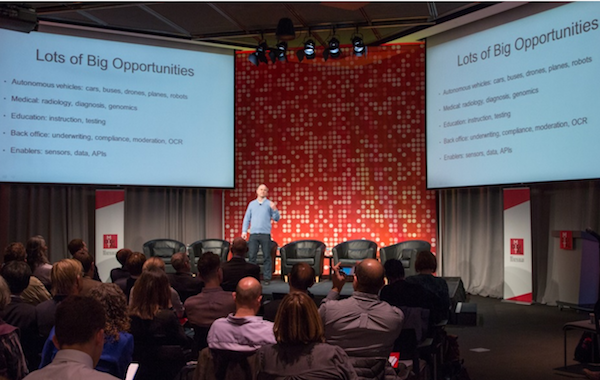by Kathleen Held

By 2022, the biggest impact of AI (artificial intelligence) and machine learning will be the transformation of knowledge work.
This is already underway. In continued preparation for this transformation we should be asking:
How can we get smarter?
How can we train/retrain ourselves for these predicted changes?
Thanks in part to Hollywood, there is a bit of unease when people think about artificial intelligence. What about "bad" robots like the Terminator? Are machines taking human jobs and shrinking the workforce, increasing unemployment and displacing industries? What happens when one robot learns something and then all robots learn the same thing? Are we ready for the societal implications of this shift?
For machines to progress they need increasing human capabilities. Will robots become smarter than us and where does that leave humans?
At the recent
MIT AI & Machine Learning Disruption Timeline Conference, academic experts and industry leaders drilled down on these issues and more. While there were no obvious robots in the room, there were plenty of smart connected devices.

Machines will be superhuman, said Eric Brynjolfsson, Director of the
MIT IDE. They are already outperforming humans in many tasks and jobs: in factories, warehouses, transportation and gaming to mention a few. As more data is collected and wrangled, as algorithms improve and computing power increases so will the strength and success of AI and machine learning.
The companies that are reinventing themselves to take advantage of our digital economy will win. According to Dr. Colin Parris, VP at GE, this means huge capital investments in assets and data analytics to recover costs.
Sensors, bots and drones are collecting data, AI and machine learning are helping to build models and predicting outcomes, which have huge financial implications. At IBM, Elliot Turner, Director IBM Watson, shared that IBM is thinking of machines as augmenting humans- not replacing them. They are helping companies to leverage their data and to explore derivative uses of their data to distill into something new for competitive advantage.
David Autor, Associate Head of MIT Department of Economics asked the pointed question, "Why hasn't automation vanquished employment?" He offered that with judgment and creativity the value of labor is rising. We need to think of new products and ideas.
At Thomson Reuters, the advancement of machine learning and other techniques in artificial intelligence are creating opportunities to design data-driven applications that can recognize patterns to become sufficiently "
cognitive" to reduce and even automate repetitive manual work. The availability of both proprietary and open data has allowed our data scientists to train mathematical and statistical models to predict most likely outcomes.

With the improvement and automation of workflows in the professional industries, employers and employees alike can unleash time spent on repetitive tasks to devote to
higher value work in organizations.
As we move quickly into a world shared with AI and machines there are key implications to consider:
As we automate jobs, how are we continuously training and retraining our workforce? It was noted that every 2-3 years new skills would be required and retraining necessary. How is the educational system adapting to this demand?
Everyday, 10,000 people in the US retire. This blossoming population will increase demand upon caregivers. Caregivers are underpaid laborers and there aren't enough of them. Humans understanding humans in high touch areas, such as working with the elderly is an area of high priority. Machines are not suited to this work, at least not today. This is an example of a shift to training and compensating workers for valued and in demand soft interpersonal skills.
As the field of AI and machine learning advances, we should have guiding principles:
We need standards of communication between machines and the sharing of information.
Robots should be trained to be more transparent and able to label their experiences.
Understand the cultural demands for smart machines, not everyone wants a robot to help them clean.
Humans have the responsibility to leverage the technology in responsible ways - think of machines as augmenting humans not replacing them.
Of course a uniquely human endeavor is to recognize and support organizations like
MIT Initiative on the Digital Economy which actively leads this conversation and finds actionable solutions through efforts such as the
Inclusive Innovation Challenge.
Learn more
Visit
Innovation @ ThomsonReuters.com to learn more about how we are pairing technology with human expertise, and how you can get involved.
Original post published on April 5, 2017 by Kathleen Held: Humans and Machines: The Ultimate Partnership?
Opinions expressed by the author are not necessarily those of WITI.
Are you interested in boosting your career, personal development, networking, and giving back? If so, WITI is the place for you! Become a WITI Member and receive exclusive access to attend our WITI members-only events, webinars, online coaching circles, find mentorship opportunities (become a mentor; find a mentor), and more!
Founded in 1989, WITI (Women in Technology International) is committed to empowering innovators, inspiring future generations and building inclusive cultures, worldwide. WITI is redefining the way women and men collaborate to drive innovation and business growth and is helping corporate partners create and foster gender inclusive cultures. A leading authority of women in technology and business, WITI has been advocating and recognizing women's contributions in the industry for more than 30 years.
The organization delivers leading edge programs and platforms for individuals and companies -- designed to empower professionals, boost competitiveness and cultivate partnerships, globally. WITI’s ecosystem includes more than a million professionals, 60 networks and 300 partners, worldwide.
WITI's Mission
Empower Innovators.
Inspire Future Generations.
Build Inclusive Cultures.
As Part of That Mission WITI Is Committed to
Building Your Network.
Building Your Brand.
Advancing Your Career.




Comments